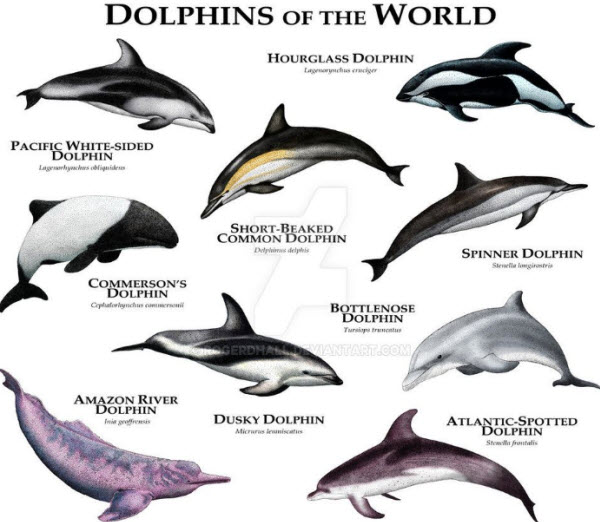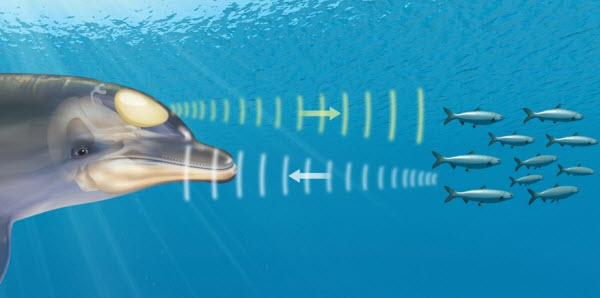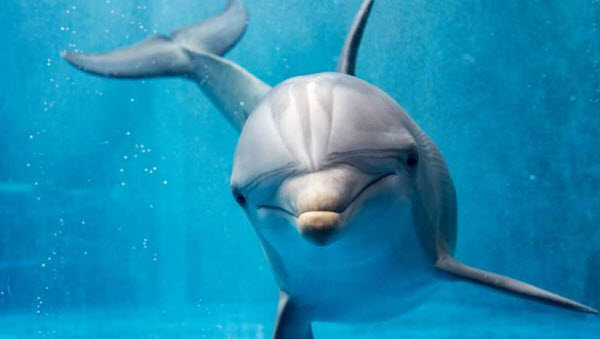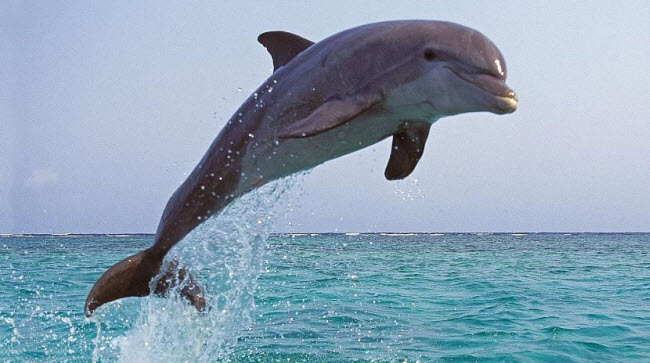The dolphin, a marine mammal known for its intelligence and playful nature, has long been regarded as a friend of humans. Dolphins are divided into 36 different species, each adapted to life in the water with streamlined bodies, modified limbs into flippers, and tails that provide agility and speed. They can dive to great depths and have a layer of blubber under their skin to keep them warm in cold waters. However, most dolphin species prefer to inhabit warmer tropical waters.
Dolphins have a remarkable sense of hearing that is highly effective both underwater and in the air, sometimes compensating for their vision. These social animals hold a significant place in various cultures due to their emotional similarities with humans. They are often trained in recreational facilities to perform acrobatic displays, thanks to their playful spirit. Unfortunately, dolphins currently face numerous threats, including accidental fishing, habitat loss, and marine pollution.
Close Relatives of Whales
Dolphins are closely related to whales, belonging to the scientific order “Cetacea,” which includes dolphins, whales, and porpoises. There are 36 species of dolphins, ranging from the largest, the killer whale, to the smallest, the Maui dolphin. Depending on the species, dolphins come in a variety of colors, from light shades like white and pink to darker hues of brown, gray, blue, and black. They have streamlined bodies that can reach speeds of up to 18 miles per hour, smooth skin, fins, a dorsal fin, and a long, slender snout with nearly 100 teeth inside. Dolphins have a blowhole on top of their head with a pair of nostrils they use for breathing when surfacing.
A common question about dolphins is how they manage to sleep and breathe air simultaneously. Since dolphins are mammals, they need to breathe air, and if they were to sleep entirely, they might sink and drown. The answer lies in the way dolphins are designed. They have the ability to store more oxygen than humans, allowing them to float more easily. When they sleep, they float about 10 inches below the water’s surface and rise to breathe through their blowhole without waking.

Keen Senses and Communication
Dolphins have eyes on the sides of their heads, and each eye moves independently, giving them a wide range of vision. They can see well both underwater and above it, similar to cats or dogs, except for river dolphins, whose vision is less developed due to living in murky waters where good eyesight is not as helpful. Dolphins use echolocation, emitting clicking sounds to navigate and find prey, and whistling to communicate with other members of their pod. Researchers have also identified other dolphin sounds, including screeches, calls, hums, and squeaks. It is believed that slow clicks and high-pitched whistles indicate satisfaction, while harsh, low-pitched calls express annoyance. Despite their small ears, dolphins are likely the best hearers in the animal kingdom, receiving sound through their jaw and head, with vibrations traveling to the delicate bones of their inner ear.

Like sonar, dolphins emit sounds that travel underwater and bounce back when they hit an object, allowing them to determine the object’s location. This echolocation ability helps dolphins find food or avoid predators, even in dark or murky waters. Dolphins living in rivers use echolocation to hunt fish in muddy waters. Dolphins are agile and fast, capable of jumping out of the water, making them entertaining performers.
Habitat and Diet
Dolphins can be found in oceans around the world. Some species live mainly along coastlines, while others reside far out at sea or in freshwater rivers, such as the South Asian river dolphin and the Amazon river dolphin. Dolphins are highly intelligent and social animals with strong memories, often working together to catch fish. They herd schools of fish for group feeding, with some dolphins using clicking sounds to corral their prey. Bottlenose dolphins may rush toward mud banks to catch stranded fish. Dolphins primarily feed on fish, octopus, squid, and shrimp, while killer whales, the largest type of dolphin, hunt small whales, penguins, and birds.

As mammals, dolphins are warm-blooded and nurse their young. Male dolphins typically have multiple mates and prefer to mate annually. Female dolphins have a gestation period of 9 to 16 months, depending on the species, and usually give birth to a single calf that stays with the mother for up to six years, depending on the species.
Social Structure and Behavior
Dolphins live in groups, ranging from five to hundreds, swimming in synchronized formations. They work together to assist injured or sick members and help newborns reach the surface to breathe. If a predator intrudes, dolphins will gather around as a group and attack with their sharp snouts, even capable of killing a large shark by ramming it collectively. Dolphins are agile swimmers and often leap out of the water, possibly for fun, communication, or to remove pesky parasites. They are known for their friendly nature towards humans and have been seen protecting swimmers from shark attacks by circling them or pushing sharks away.

Conservation Challenges
Dolphins face many threats due to fishing, pollution, and human development along coastlines and rivers. The construction of dams, habitat loss, fishing nets, and climate change have also had a significant negative impact on dolphins. Climate change and global warming have caused some of their primary food sources to move to deeper, colder waters, affecting their reproduction rates and survival. To combat these issues, many countries joined the International Dolphin Conservation Program in 2000, an international agreement to reduce dolphin deaths through tuna fishing. In the United States, some dolphin species are protected under the Marine Mammal Protection Act of 1972.
Identification Card

- Category: Mammals
- Order: Cetacea
- Family: Delphinidae
- Type: Dolphin
- Lifespan: Varies by species, ranging from 20 to 90 years
- Gestation Period: Typically 10 to 12 months for most species
- Birth Weight: Ranges from 4.5 to 180 kg depending on the species
- Length: The largest, the killer whale, can reach 7 meters, while the smallest, the Maui dolphin, is about 1.2 meters
- Weight: The heaviest, the killer whale, can weigh up to 4.5 tons, while the smallest, the Maui dolphin, weighs about 40 kilograms
Quick Facts About Dolphins
- Each dolphin has a unique whistle used to communicate with others in its pod.
- Dolphins do not drink seawater; they get the water they need from the fish they eat.
- Dolphins have cone-shaped teeth with sharp points that help them catch prey.
- The three most famous types of dolphins, the white-sided dolphin, the bottlenose dolphin, and the spinner dolphin, can be seen in marine mammal shows, TV shows, and movies.
